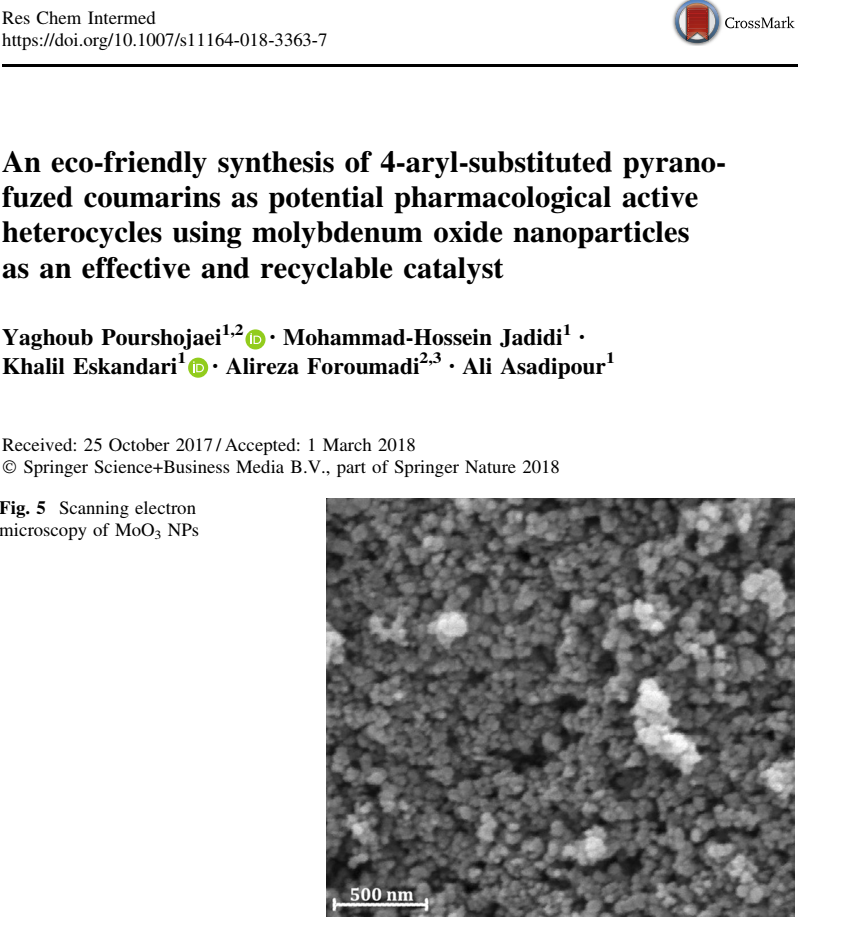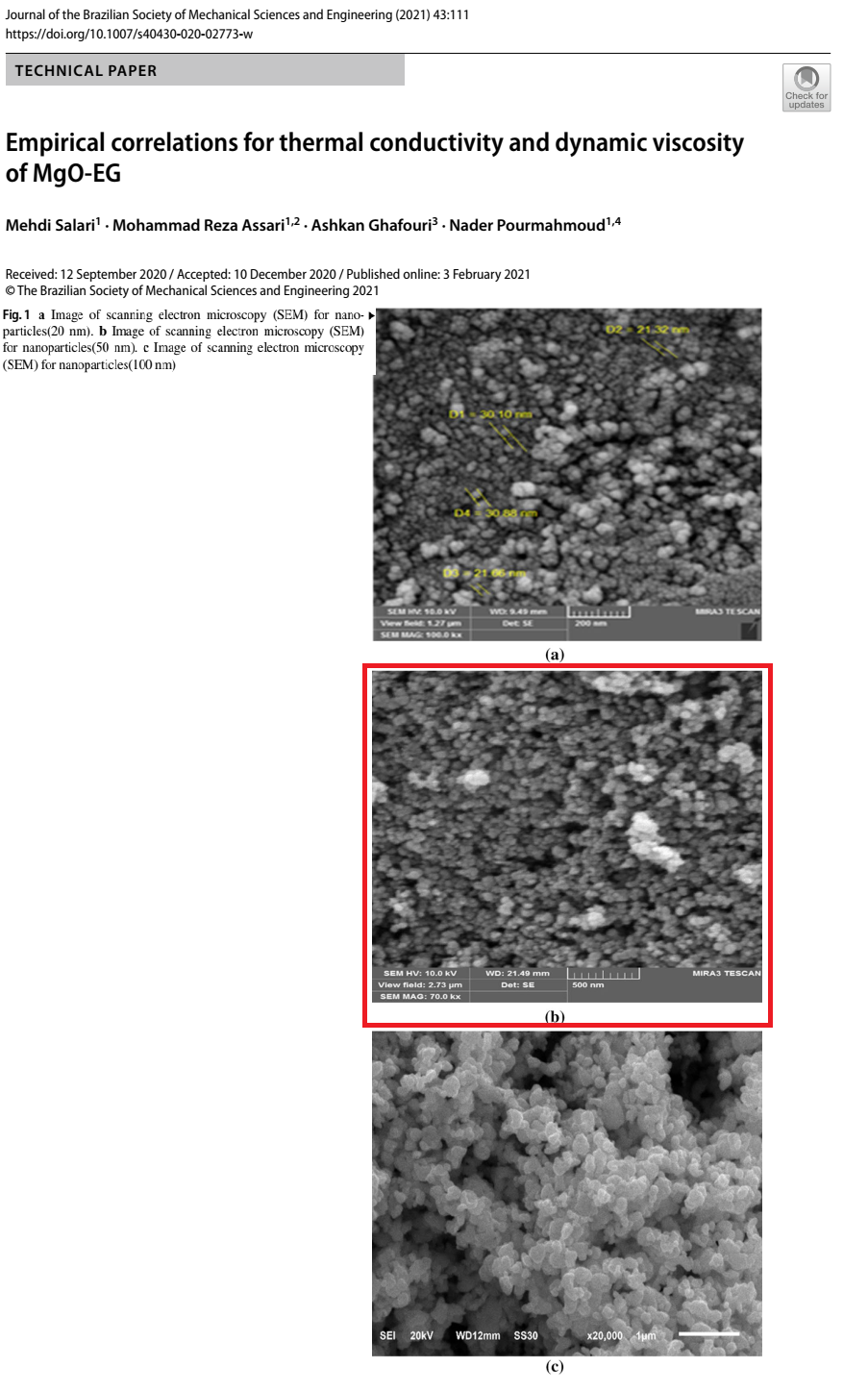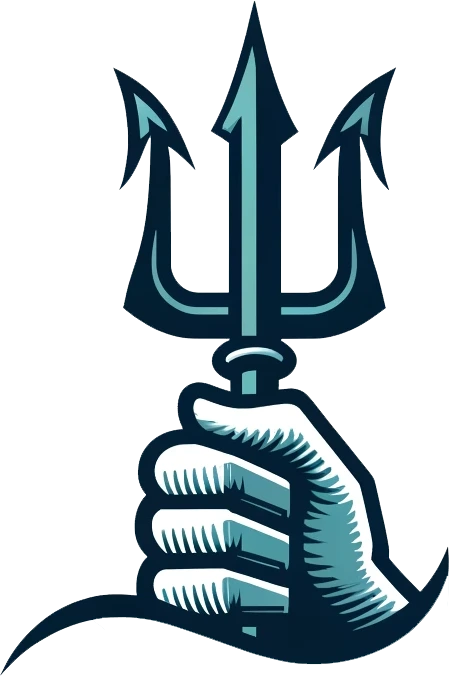Several articles authored by different researchers and published in various journals have used a seemingly identical SEM image for completely different materials, including MoO3, MgO, and CuO nanoparticles:
1. Pourshojaei et al. (2018) have used this SEM image for MoO3 nanoparticles:

Pourshojaei, Y., Jadidi, M. H., Eskandari, K., Foroumadi, A., & Asadipour, A. (2018). An eco-friendly synthesis of 4-aryl-substituted pyrano-fuzed coumarins as potential pharmacological active heterocycles using molybdenum oxide nanoparticles as an effective and recyclable catalyst. Research on Chemical Intermediates, 44, 4195-4212.
2. Salari et al. (2021) have used this SEM image for MgO nanoparticles:

Salari, M., Assari, M. R., Ghafouri, A., & Pourmahmoud, N. (2021). Empirical correlations for thermal conductivity and dynamic viscosity of MgO-EG. Journal of the Brazilian Society of Mechanical Sciences and Engineering, 43, 1-13.
3. Karimi et al. have used this SEM image for CuO nanoparticles:

Karimi, S., Isfahani, A. H. M., Afrand, M., & Akbari, M. (2024). Empirical investigation of the effect of adding nanoparticles to HB-80 gas turbine oil: Evaluation of thermophysical behaviors. Heliyon, 10(8).
This issue requires clarification from the authors of all these articles to understand how the same SEM image has been used for completely different materials. It raises concerns about the authenticity and validity of the data presented in these studies.
To resolve this matter constructively, the authors of all three articles are encouraged to cooperate and engage in an open dialogue to provide an explanation for this overlap and ensure scientific integrity.


Several articles authored by different researchers and published in various journals have used a seemingly identical TEM image for completely different materials, including CuO, Al2O3, magnetite, and SiC nanoparticles:
1. Saien and Gorji have used this TEM image for magnetite nanoparticles:
– Saien, J., & Gorji, A. M. (2017). Simultaneous adsorption of CTAB surfactant and magnetite nanoparticles on the interfacial tension of n-hexane–water. Journal of Molecular Liquids, 242, 1027-1034.
2. Ghahdarijani et al. have used this same image for CuO nanoparticles:
– Ghahdarijani, A. M., Hormozi, F., & Asl, A. H. (2016). Application of nano-fluids to heat transfer enhancement in double-walled reactor. Journal of Chemical Engineering Process Technology, 7, 1-8.
3. Ghasemi et al. have used it for Al2O3 nanoparticles:
– Ghasemi, N., Aghayari, R., & Maddah, H. (2018). Optimizing the parameters of heat transmission in a small heat exchanger with spiral tapes cut as triangles and aluminum oxide nanofluid using central composite design method. Heat and Mass Transfer, 54, 2113-2130.
4. Karimi et al. have used the image for SiC nanoparticles:
– Karimi, S., Heyhat, M. M., Isfahani, A. H. M., & Hosseinian, A. (2020). Experimental investigation of convective heat transfer and pressure drop of SiC/water nanofluid in a shell and tube heat exchanger. Heat and Mass Transfer, 56(8), 2325-2331.
5. Sadeghi et al. have used it for CuO nanoparticles:
– Sadeghi, S., Mousavi-Sabet, H., Hedayati, A., Zargari, A., Multisanti, C. R., & Faggio, C. (2024). Copper-oxide nanoparticles effects on goldfish (Carassius auratus): Lethal toxicity, haematological, and biochemical effects. Veterinary Research Communications, 48, 1611–1620.
6. Karimi et al. have used it for CuO nanoparticles:
-Karimi, S., Isfahani, A. H. M., Afrand, M., & Akbari, M. (2024). Empirical investigation of the effect of adding nanoparticles to HB-80 gas turbine oil: Evaluation of thermophysical behaviors. Heliyon, 10(8).
This issue requires clarification from the authors of all these articles to understand how the same TEM image has been used for completely different materials. It raises concerns about the authenticity and validity of the data presented in these studies.
To resolve this matter constructively, the authors of all six articles are encouraged to cooperate and engage in an open dialogue to provide an explanation for this overlap and ensure scientific integrity.